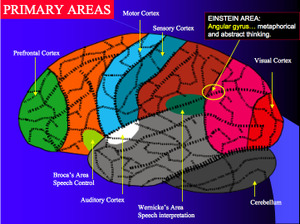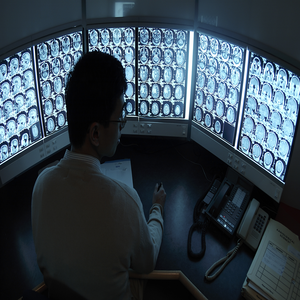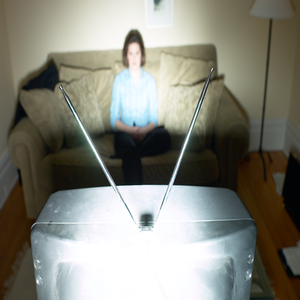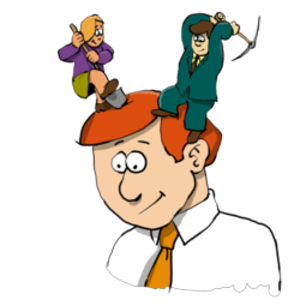Disturbances in Working Memory in Children

There is news from England about some research that indicates that many children who were thought to have low intelligence actually have a problem with working memory, the ability to hold information in your head and manipulate it mentally. It is largely genetic and if it fails to function normally it can affect long-term academic success into adulthood and prevent children from achieving their potential.
The researchers from Durham University surveyed over three thousand children in 35 schools across the UK using the first tool to enabled them to assess memory capacity in the classroom. They found that ten per cent of school children across all age ranges suffer from poor working memory seriously affecting their learning. Poor working memory is rarely identified by teachers, who often describe children with this problem as inattentive or as having lower levels of intelligence.
The new tool is a combination of a checklist and computer program created after many years of research into poor working memory in children, and it should
enable psychologists and teachers to identify and assess children’s
memory capacity as early as four years old.
The hope is that early assessment of children will enable teachers to adopt new approaches to teaching.
The checklist, called the Working Memory Rating Scale (WMRS), will enable teachers to identify children who they think may have a problem with working memory without immediately subjecting them to a test. A high score on this checklist shows that a child is likely to have working memory problems that will affect his or her academic progress.
Children can be evaluated using the computerized Automated Working Memory Assessment (AWMA). The tools also suggest ways for teachers to manage the children’s working memory loads that will minimize the chances of children failing to complete tasks. Recommendations include repetition of instructions, talking in simple short sentences and breaking down tasks into smaller chunks of information.
Pearson Assessment publishes the tools.
This is interesting work, but we still need more research to answer another question: disturbances in working memory have been identified in attention deficit/hyperactivity disorder (ADHD). So the question is whether many of the children found to have defects in working memory may actually have had ADHD.
Attention Deficit Disorder and the Growing Brain

An extremely important article by researchers from the National Institute of Mental Health has just been published in the Proceedings of the National Academies of Sciences. It suggests that children with Attention Deficit Hyperactivity Disorder (ADHD) have brains that develop more slowly than those of children without ADHD. However in most cases they still follow a normal pattern of development.
In a study of 450 children, 225 of whom had ADHD, the researchers found that the cerebral cortex of children with ADHD developed about three years more slowly.
The primary measure that they used was the peak thickness of the brain, which is normally taken to be a sign of maturity. Half of the children with ADHD reached peak thickness when they were an average of 10.5 years old, compared with 7.5 years among children without ADHD.
Even if the brain is developing more slowly, the fact that it appears to grow normally is reassuring, and may explain why a substantial proportion of children with ADHD do grow out of it as they get older. Though it still leaves us with several questions:
- Why does the delay occur at all?
- Why do so many people NOT grow out of it, and have persistent symptoms in adulthood?
- Is the brain really “catching up?” The brains of people without ADHD also continue to develop and grow
The National Institute of Mental Health has also published a nice press release that includes a video of brain maturation. You can find it here.
Dopamine, Drugs and Diabetes

We recently talked about the increasing evidence that insulin has many extremely important roles in the brain.
New research by investigators at the Center for Molecular Neuroscience and the Institute of Imaging Science at Vanderbilt University Medical Center researchers, working with colleagues in Texas, has found that insulin levels affect the brain’s dopamine systems. These systems are involved in motivation, reward, salience, movement and emotional processing. Disturbances in dopamine pathways have been implicated in substance abuse, as well as schizophrenia, bipolar disorder and attention deficit hyperactivity disorder (ADHD). Drugs that interfere with the dopamine pathways may produce Parkinsonism as well as elevations of the hormone prolactin.
The psychostimulant drugs amphetamine and cocaine, as well as related medications for ADHD, block the reuptake of the neurotransmitter dopamine by dopamine transporters (DATs) thereby increasing the level of dopamine signaling. Some of these compounds also cause a massive surge of dopamine through DATs, resulting in high levels of synaptic dopamine that alter attention, increases motor activity and plays an important role in the addictive properties of psychostimulants.
The reason for examining a possible relationship between dopamine and insulin goes back to the 1970s, when it was reported that amphetamine had no effect on diabetic animals and in the 1980s it was shown that diabetic rats did not show the usual stereotyped behaviors when given amphetamine. There were also odd reports about disturbances in the enzyme dopamine-beta-hydroxylase in experimental diabetes and changes in dopamine D1 receptors in the brains of rats with induced diabetes.
These observations lead to this new research into a possible link between insulin signaling and amphetamine action.
They used a standard a rat model of type 1 diabetes in which insulin levels are massively depleted, and then assessed the function of the dopaminergic pathway in the striatum, an area of the brain rich in dopamine.
In the absence of insulin, amphetamine-induced dopamine signaling was disrupted: dopamine release in the striatum was severely impaired and expression of DAT on the surface of the nerve terminal was significantly reduced.
The lack of the DAT protein on the plasma membrane prevents the amphetamine-induced increase in extracellular dopamine, and in turn, amphetamine fails to activate the dopamine pathways that stimulate reward, attention and movement.
The researchers then gave insulin into the brains of the diabetic animals and found that the system returns to normal, indicating that the lack of insulin in the striatum directly affected amphetamine action.
They also developed a probe for brain DAT activity using functional magnetic resonance imaging (fMRI). In normal, healthy rats with plenty of insulin, amphetamine increased neural activity in the striatum. But in diabetic animals, activity in the striatum was suppressed.
So there is a powerful interplay between dopamine neurotransmitter systems and insulin signaling mechanisms. The results are some of the first to link insulin levels and dopamine function in the brain and hold several implications for human health and disease.
We need to have another look at the effect of diabetes on the brain. We have known that people with diabetes are at increased risk of cognitive impairment and depression, and we had assumed that it was because of hypoglycemia and vascular disease. Those assumptions may have been wrong.
The findings may also be important for diseases with altered dopamine signaling, such as schizophrenia and ADHD. Insulin may have something to do with the underlying brain disturbances in ADHD. Then control of insulin levels and neuronal responses to the hormone may help determine the efficacy of psychostimulants in people with ADHD.
Every now and then you see people on psychostimulant medications who need huge doses. Perhaps their problem lies with insulin rather than dopamine.
Television and Behavior Problems in Children

The debate about the possible association between watching television and children’s behavior has been going on ever since this window on the world entered our lives fifty years ago.
A new study, indicates that consistent, heavy television viewing (more than two hours a day) throughout early childhood can cause behavior, sleep and attention problems.
Yes, you did read that correctly: heavy viewing is just two hours a day!
Researchers from the Department of Population, Family, and Reproductive Health at Johns Hopkins assessed data from the Healthy Steps for Young Children national evaluation effort that looked at the effects of early, concurrent and sustained television exposure at age two and a half and again at five and a half. They also measured the effects of having a television in the child’s bedroom at age five and a half.
Sixteen percent of parents said that their child watched television for more than two hours a day at age two and a half years only, which they called “early exposure;” 15 percent reported that their children watched more than two hours of television daily at five and a half years only, which they called “concurrent exposure;” and 20 percent reported more than two hours of television viewing daily at both times (sustained exposure).
Forty-one percent of children had a television in their bedroom by the age of five and a half. Sustained television viewing was associated with sleep, attention and aggressive behavior problems, and what is known as “externalizing” of problem behaviors: throwing or breaking things.
Excessive television exposure was associated with fewer social skills. Having a television in the bedroom was associated with sleep problems and less emotional reactivity in the five year olds. Early exposure to television for more than two hours a day, which decreased over time, did not cause behavior or social problems.
The American Academy of Pediatrics recommends no television viewing for children under age 2, and no more than two hours of daily media exposure for ages 2 and older.
This is scary research. How many children are parked in front of a television for hours at a time, just to get them out of the way. And what kinds of problems are we creating for our future?
One of the smartest people I know has several children who have never watched television. They are instead all multilingual and each is an expert in at least one musical instrument.
Makes you think, doesn’t it?
Taking Action on Food Additives and Hyperactivity

Regular readers will remember my recent article concerning food additives and hyperactivity in children.
I have just read that he British Food Standards Agency (FSA) has been accused by campaigners of “chickening out” of banning additives linked to hyperactivity in children even though they funded the research that was published in the Lancet.
After the research was published, the FSA issued updated advice that eliminating the artificial colorings from the diet might have some beneficial effects in hyperactive children.
But critics said it did not go far enough and several environmental and children’s campaign groups, including the National Union of Teachers, called on the watchdog to extend that advice to all children since the additives posed a threat to psychological health.
The FSA responded by saying that the evidence was not strong enough to justify a ban and it would wait for the European Food Safety Authority (EFSA) to make a decision on use of additives in food.
EFSA says that it is considering the research as a matter of urgency and will be making an initial response within the next month.
We shall see what they have to say.
These were the main additives incriminated in the Lancet study:
Sunset yellow (E110) – Coloring found in some drinks
Carmoisine (E122) – Red coloring in jelly
Tartrazine (E102) – New coloring in some frozen and carbonated drinks
Ponceau 4R (E124) – Red coloring
Sodium benzoate (E211) – Preservative
Quinoline yellow (E104) – Food coloring
Allura red AC (E129) – Orange / red food dye
Food Additives, Food Colorings and Hyperactivity

Regular readers will know that I am very interested in the impact of food and food additives on cognition and behavior. Unfortunately it is a field that has generated more heat than light, with some patients associations and commercial organizations providing rather unbalanced assessments about the whole issue and how best to deal with it.
What we do on this website is to provide you with information that has a solid foundation. A good example is a new study published this week in the Lancet by a team of researchers from Southampton University in the United Kingdom. (The full article is available here).
An alarming number of foods contain artificial food color and additives (AFCAs), and there has been a great deal of concern about their potential impact not only on behavior, but also on the developing brain.
A study published three years ago examined the impact of specific mixtures of additives on hyperactivity in three-year-old children. It was an important piece of work, but the worry was that the study focused on parental rather than objective ratings of hyperactivity. Though parents are usually very good at observing their own children, most of us also have our own ideas about the things that may cause problems.
In this new study was sponsored by the British Food Standards Agency and the researchers looked at the effects of additives on changes in children’s behavior in a community-based, double-blinded, placebo-controlled, crossover trial.
The study involved 153 children aged 3, plus 144 children aged 8-9. They were given either a drink containing sodium benzoate plus one of two AFCA mixes, or a placebo drink. The two AFCA mixes contained:
- Mix A – included 20 mg of artificial food colorings (5 mg sunset yellow [E110], 2⋅5 mg carmoisinetartrazine [E102], and 5 mg ponceau 4R [E124, and 45 mg of sodium benzoate [E211]. (These were the same ingredients used in the previous study). [E122], 7⋅5 mg
- Mix B was designed to be what the average 3 year-old and 8-9 year old may be consuming today, and included 30 mg of artificial food colorings (7⋅5 mg sunset yellow, 7⋅5 mg carmoisine, 7⋅5 mg quinoline yellow [E110], and 7⋅5 mg allura red AC [E129]) and 45 mg of sodium benzoate.
The children’s behaviors were measured by a “global hyperactivity aggregate” (GHA) that is based on teachers’ and parents’ ratings. The older children also received a computerized test for attention.
The main findings were that:
- Mix A had a significant adverse effect on children in GHA for all the 3 year-olds, compared to the placebo.
- Mix B produced mixed results for 3 year-olds
- Both Mix A and Mix B had significant adverse effects on the 8-9 year olds, compared to the 8-9 year-olds on the placebo
- Children vary greatly in their levels of adverse effects from consuming AFCA
So this new research indicates that foods containing AFCAs may fuel hyperactive behaviors in children from early to middle childhood. An important point is that AFCAs may impact any child: the effect is not restricted to children who are already hyperactive or have attention-deficit/hyperactivity disorder (ADHD). The problem with hyperactivity is not so much the challenge of living with an overly energetic child, but rather the impact of hyperactivity on development and education, particularly on reading skills. The hyperactive child may not get the full benefit of a conventional education.
The researchers do not yet know whether their findings apply to older children. But they raise the question whether complete withdrawal of AFCAs from the food supply might decreases the overall rate of hyperactivity in the population.
However, they ask whether the general levels of hyperactivity in children in the general population might not go down significantly if AFCAs were withdrawn completely.
Rhythms in the Brain

It is often a bit frustrating to read articles about the brain in which the writer says things like: “research has shown that the insula does this…” or “the amygdala does that…”
This idea that it is possible to reduce brain functions to regions of the brain is not correct. Some years ago I used the term “Neo-phrenology,” to describe this fallacy, though I am sure that I was not the first. (Phrenology was the old and discredited theory that you tell things about people by examining the bumps on their heads.)
So why is it a fallacy? The idea that certain functions can be “localized” to a bit of the brain is called “naïve localizationism.” The vast majority of the psychological functions of the brain are performed by distributed networks, not a single lump of tissue. One of the remarkable things about the human brain is that it can recruit new circuits as they are need. If we do not have enough brainpower to solve a problem, other systems are taken off line so that they do not distract and may be able to help. You have probably had the experience of working on something so intensely that you lose track of time, and fail to hear things going on around you.
Yes, there are regions that have jobs to do. For instance the auditory cortex is responsible for processing sound. But after that initial processing the rest of the brain becomes involved in deciding what to do with the information. The key to understanding the brain is how different regions of the brain communicate. As I recently mentioned in a different context, there are good reasons for believing that a number of problems, from the schizophrenias to the attention deficit disorders, may all be a result of poor communication between different regions of the brain.
Part of the problem is working out how regions communicate has been technical: we have not had the computers or hardware to do the measurements. But that is beginning to change.
Earl Miller, a professor of neuroscience at Massachusetts Institute of Technology’s Picower Institute for Learning and Memory, recently said that today’s faster computers and more advanced electronics might provide scientists with the tools they need to unlock the brain’s mysteries.
“Multiple electrode recording techniques, offer a whole new level of brain interactions that can’t be seen using the [current] piecemeal approach.”
Two studies published recently in th journal Science support this idea.
In the first Thilo Womelsdorf and a group of neuroscientists at the F. C. Donders Center for Cognitive Neuroimaging at Radboud University Nijmegen in the Netherlands, looked at the electrical activities of groups of neurons in the brains of cats and monkeys wile they were engaged in an array of different tasks. They found that two groups of neurons could only communicate efficiently with each other when their rhythms are coordinated, or synchronized. If the rhythms are not coordinated, then one group sends information while the other is not ready to take it on and vice versa.
The researchers found that when the rhythms of electrical activity are synchronized between neurons in distinct brain areas, memories are made and tasks are completed more efficiently.
The other study, by scientists at the University of Melbourne in Australia, also revealed communication between the cerebral cortex and the deep medial temporal region.
They flashed two images at a group of macaque monkeys for less than a second. The monkeys had to decide whether the spatial orientation of a stack of bars in two images were the same or different. While the animals worked, researchers monitored the electrical fields in the posterior parietal cortex, which is one part of the system involved in directing spatial attention. At the same time they looked at the medial temporal area, a region deep in the midbrain that handles movement perception. The researchers had hypothesized that these two areas need to communicate with one another to enable reasoning.
The researchers observed activity first in the parietal cortex, followed by synchronous action there and in the medial temporal area. The delay illustrates “a top-down” feedback from the cortex, which then signals the lower area.
One of the authors, Trichur Vidyasagar, said,
“The parietal neurons seem to code for what is salient or relevant in the world and allocate attentional resources accordingly. The medial temporal neurons are sensory ones that process the visual signals, but due to the influence of the parietal cortex the activity across the medial temporal area is varied.”
The studies were accompanied by an editorial in which Robert Knight, a cognitive neuroscientist at the University of California, Berkeley, praised the findings – and their potential significance.
This research is important for two reasons:
First it confirms that the key to understanding the brain is the interaction of networks.
Second, there are a number of periodic disorders, such as depression, seasonal affective disorder, mania and even some rare types of episodic psychosis that are episodic and are not associated with any clearly defined neuroanatomical disruption. It may well be that some of the periodic symptoms are caused by intermittent network dysfunction, as a result of disturbed oscillatory dynamics.
“In all things there is a law of cycles.”
–Publius Cornelius Tacitus (Roman Historian, Writer, Orator and Public Official, A.D.56-c.120)
“Human beings, vegetables or cosmic dust, we all dance to the same mysterious tune, intoned in the distance by an invisible player.”
–Albert Einstein (German-born American Physicist and, in 1921, Winner of the Nobel Prize in Physics, 1879-1955)
“It has been said that a complete understanding of the Law of Cycles would bring man to a high degree of initiation. This Law of Periodicity underlies all the processes of nature and its study would lead a man out of the world of objective effects into that of subjective causes.”
–Alice A. Bailey (English Writer, Spiritual Teacher and Founder of the Arcane School, 1880-1949)
“At the heart of each of us, whatever our imperfections, there exists a silent pulse of perfect rhythm, a complex of wave forms and resonances, which is absolutely individual and unique, and yet connects us to everything in the universe. The act of getting in touch with this pulse can transform our personal experience and in some way alter the world around us.”
–George Leonard (American Aikidoist and Writer, 1923-)
Non-pharmacological and Lifestyle Approaches to Attention-Deficit/Hyperactivity Disorder: 11. Integrated Medicine

The whole point of Integrated Medicine and Integrated Health is to help the person with attention-deficit hyperactivity disorder (ADHD) to become integrated as a person by using an integrated approach to treatment. This kind of comprehensive approach is particularly important for many people with ADHD. I also want to re-emphasize that although ADHD is the approved term for the problem, many people, particularly adults, may have little overt evidence of hyperactivity, and they are better thought of as having “ADD.”
Attentional problems come in all shapes and sizes. Some are so mild that people just need to be shown how to use a day planner and implement some time management scheme. Others need a more aggressive and comprehensive approach. Whatever we do has to be individualized to the person with the problem. Not only do we have to match the plan with the person, we also need to match it with his or her belief system.
It is important to recognize that no one approach is likely to work on its own. Medications may be very helpful, but they are only tools to help people get organized so that they can fulfill their potential. And medications are unlikely to be effective unless we also deal with nutrition, posture, breathing, sleep and environmental stress.
It is also essential to realize that ADHD is highly co-morbid: there is evidence of increased rates of physical problems, including disturbances in thyroid function and cell membrane function throughout the body. The rates of conduct disorder, oppositional defiant disorder, learning disabilities, tics and Tourette’s, worry, anxiety and mood disorders are all much higher in people with ADHD. So high that until recently, many experts believed that ADHD was a symptom rather than a clearly delineated illness. This overlap is also one of the reasons why some people persist in saying that the diagnosis of ADHD is nothing more than a stigmatizing label for socially unacceptable behavior.
Physical
- Medications
- Nutrition
- Posture
- Exercise
- Environment
Over the last few weeks we have spent a lot of time looking at some of the options for treating the physical components of the problem. Now let us look at the rest.
Psychological
- Find out and work with a person’s interests. ADHD is highly dependent on context. A child or adult may have terrible problems with schoolwork, but be able to play a video game for hours on end
- There are multiple intelligences: uncover which are of the greatest importance. It is essential for a person to discover their strengths rather than being forced to focus on the weaknesses. Many people with ADHD find that highlighting text in a book can be useful, while others learn by doing
- People are more likely to follow instructions if they are interesting and emotionally charged
- Bear in mind that many people have poor self-esteem and others suffer from enormous feelings of regret. This is a particular issue for people who may have reached middle age before being diagnosed. We have seen countless people who feel that they have missed out on life. A man working in construction realized that he could have gone to college thirty years ago if only his ADHD had been diagnosed and treated
- Teach visualization skills
- Discover which times of the day are best in terms of attention and alertness
- Learn some simple relaxation techniques
- Learn problem-solving skills
Social
- ADHD can play havoc with relationships. If a child has it, there can be enormous stress on the parents and siblings, all of whom are at higher risk of some features of ADHD themselves. It is essential to help the family with coping skills. ADHD can also put a great deal of stress on a spouse or children. It is also important to know that many people with ADHD have sexual problems that stem from impatience, a low frustration threshold if they cannot have sex when they want it, and real problems with enjoying the moment and taking time to enjoy a romantic interlude. Some people also use sex as a form of self-medication. So it is essential to find out if there are sex or relationship problems and to deal with them, which may need outside help
- Many people with ADHD are socially awkward and may need to learn some social and communication skills
- ADHD and social awkwardness can be magnets for bullies, and it is remarkable how many young people with untreated or inadequately treated ADHD have been bullied. Occasionally they become the perpetrators of bullying to compensate for their difficulties. In either case it is important to discover and deal with bullying. It is one of several reasons why some experts have recommended enrolling a child in martial arts classes. Not only can they help with self-defense, but also the discipline of a martial arts class can work wonders for some people with ADHD
- Role models are important for people with ADHD. It is very helpful, particularly for young people to see that other sufferers have become extremely successful
- It is also important for parents and other family members to develop and maintain a positive image of the person with ADHD
- Develop positive yet realistic career and life goals
Subtle
- Poor breathing techniques can engender many problems. Learning to breath effectively can have profound physical effects as well as stimulating and balancing the subtle systems of the body
- As we have seen, although the research base is very small, yoga, t’ai chi ch’uan or qigong can all be very helpful
- Many people with ADHD are acutely sensitive to “atmosphere:” to the thoughts, feelings and attitudes of other people, and they need specific help to remain grounded and to protect their senses. Some of the flower essences can very helpful for that, as well as some other techniques that we shall be publishing shortly
Spiritual
- How can there be a spiritual component to ADHD? Some people find it difficult to engage in prayer or meditation because of problems with attention. However, with a little perseverance, we have evidence that some forms of meditation may actually help.
- Second the rituals of religion can sometimes provide a wonderful anchor for the person who is having a had time with ADHD.
- Another point is that ADHD is not all bad. Some people who have it become more attuned to nature, animals and to a mystical understanding of the world: an over-reliance on reasoning and linear learning can stifle those perceptions.
- Some people have suggested that ADHD may for the same reasons unlock a rich vein of creativity that might otherwise never have appeared.
There are plenty of books and websites that portray ADHD as a gift. While I have the greatest respect for this approach, it is still important for us not to forget the demonstrable problems caused by inadequately treated ADHD.
ADHD exists, it is treatable, and though it can bring many problems, it can also bring many opportunities. Just so long as we remember to respect every dimension of the person who has it, and remember that if we do not manage it, it will manage us.
Non-pharmacological and Lifestyle Approaches to Attention-Deficit/Hyperactivity Disorder: 10. Traditional Chinese Medicine

One of the problems when looking at research using traditional Chinese medicine (TCM) is that the Chinese medical system does not easily map onto the Western system of medicine. So while we might talk about attention-deficit hyperactivity disorder (ADHD), a Chinese medicine expert would be more interested in disturbances of qi, shen and jing in the whole person.
Most people who have done much acupuncture have seen people with attentional problems and tried to help them with acupuncture or acupressure. In traditional Chinese medicine, hyperactivity is thought to be the result of disturbance of the Shen (Mind or Spirit) that resides in the Heart. If the Shen is healthy then the mind and body of the child will be calm.
According to traditional Chinese medical pathology, there are three things that can disturb the Shen residing in the Heart:
- Heat
- Phlegm and/or
- Xu (Deficiency)
In the poetic language of the Chinese:
“If the Shen is not nourished sufficiently the child will not feel grounded and their Shen will flutter around nervously, like an agitated flame; this will be made worse if further Heat develops and rises, or if excessive Phlegm develops and obstructs the portals or orifices of the Heart to cause confusion and poor judgment.”
You see why Western doctors often have a hard time learning about Chinese medicine, and few ever comprehend its beauty and subtlety. And I say that after 26 years of acupuncture practice under my belt!
Despite the popularity of Chinese medicine, which includes acupuncture, herbs, nutrition and qigong, there are very few studies.
There have been some done in China, but often the structure of trials is different in China, where it is often considered unethical to withhold treatment, so studies rarely have a placebo arm.
A number of experts in Chinese medicine have written articles on their experience in treating ADHD.
Since there are so many people claiming success using Chinese medicine, there is an urgent need for controlled studies so that we can see how acupuncture and Chinese herbal medicine might fit in with other forms of treatment, and when to use what. As we have said when examining all the different forms of unorthodox medicine, we always have to balance the natural desire to do without medications against the havoc that can be caused by untreated or inadequately treated ADHD.
Having seen acupuncture and acupressure help some people with ADHD myself, I shall continue to monitor and report on any research reports that come out in the future.
Non-pharmacological and Lifestyle Approaches to Attention-Deficit/Hyperactivity Disorder: 9. Flower Essences

The original flower essences were created by a Welsh physician named Edward Bach. He passed away in 1936 at the age of forty-nine and in many ways he was well ahead of his time. He was a firm believer not only in psychosomatic medicine, but also in the impact of the soul on the body.
He used a combination of scientific knowledge, intuition and clinical practice to find and refine the use of the flower essences. He walked all over Great Britain to find the correct remedies, and prepared them by taking flowers at the peak of their blossoming, and placing them in a bowl of pure water in sunlight. The water then became the raw material from which the remedies were created. Each is bottled, and a small amount of brandy added to “preserve” the remedy, which is then administered, usually diluted in water or fruit juice.
Originally there were 38 “Bach Flower Essences” together with a 39th called Rescue Remedy, which is a combination of five of them.
As time has gone by, new remedies have been created in Europe, the Continental United States, Alaska and Australia. The appearance of these “new” remedies has caused a great deal of controversy amongst traditionalists who believe that there can only be the 38 remedies discovered by Dr. Bach.
Yet people change as they move to new regions of the earth, and it is to be expected that new remedies will be waiting for them wherever they go.
Before I came to the United States I was a dyed-in-the-wool Bach Remedies person. Although I had been using them for two decades, I soon realized that people in North America often needed a different approach, and within months of my arrival I started to try the remedies created in North America with great success. (Over on the left hand side of this blog you will find some suppliers of the remedies).
So what is the evidence that flower essences are of any value in treating ADHD? There is the evidence of case reports, but precious little in the way of controlled studies. A study from Israel failed to show any benefit in 44 children with ADHD treated with Bach Flower Essences.
However, there are experts throughout the world who continue to use them for ADHD and who claim good rates of success. They aim to treat not only the attentional symptom, but also the whole person. So in deciding on a remedy they look at all the associated symptoms. I give some examples of what they look for below.
These are the main English and American remedies that have been found in practice to help some people with ADHD. Some practitioners use them in place of medications, but it is difficult to be comfortable to do that, given the problems that can occur when young people or adults have ADHD and are left untreated.
Agrimony: The child who might be helped by this remedy looks cheerful and easy going but is often filled with inner torment. The child may have great difficulty in reading if he is in a group
Aspen: These people are anxious, apprehensive and tremulous. Their fears and anxieties have no readily apparent cause. They tend to be overly receptive to the emotions of other people. They can become very worried about the unknown, fearing that there are some dark forces that will engulf them. These people often engage in magical thinking, and the fear make them feel “paranoid.”
California Wild Rose: Children who might benefit from this tend to have low vitality, poor appetite and a lack of interest in food
Calendula: People who might benefit are typically argumentative poor listeners who have communication problems in relationships. They tend to have a lot of difficulty in receiving and acting on what others are saying
Chamomile: These children tend to be contrary, fussy and agitated. They often suffer from tension in the stomach area with related digestive disturbances. They usually have continuous emotional tension that interferes with learning and concentration
Chestnut Bud: These children often lag behind others, have difficulty with learning, repeat mistakes and have difficulty focusing on and retaining what they study
Chicory: These children demand a lot of attention because of their negative behavior. They may have temper tantrums, be overly fussy and easily get irritated if they do not get the attention that thy want. Then they tend to cling or feel sorry for themselves
Clematis: These children are daydreamers who escapes from the present by fantasizing about the future
Cosmos: These children and some adults have overly active minds that are flooded by too many ideas at once. They get so overwhelmed that they are unable to focus. This becomes very obvious when they try to think and talk at the same time. They feel overwhelmed by the overwhelming amount of information and find it hard to be articulate
Dill: These children are easily overwhelmed by new projects or when life moves too fast for them. They can feel also be overwhelmed by change
Elm: This is another remedy for people who easily feel overwhelmed. Not only do they have the feelings of being overwhelmed, they also feel over-extended and isolated
Filaree: These children get lost in details and worries. The find it very difficult to see a lose broad perspective, so they over-focus on details and can when they are be overcome by anxieties about them
Gentian: These children are not good at persevering with a project and easily get discourage. If they encounter some setback or difficulty, they find it difficult to bounce back. Gentian helps overcome discouragement after rejection or failure and makes it easier for them to get on with life without ruminating over the problem
Golden Yarrow: People who may benefit from this typically have performance anxiety. The essence may instill confidence and enable them to perform at their best
Goldenrod: These children are unsure of their own values and beliefs, so that group and family ties may easily influence them. They may become overly reliant on social approval and vulnerable to peer pressure and social expectations. Some create barriers between themselves and others by anti-social or obnoxious behavior
Holly: The child who might benefit from Holly tends to be jealous, envious and to have sibling rivalry. They tend to see any change or disruption as a threat. They are very sensitive to minor occurrences that most other people would not even notice. They may be angry, agitated, aggressive and intolerant. They are often quick to perceive others as threatening and are easily influenced
Impatiens: This can often be very helpful for children who are restless and impulsive and who eat too quickly. They often become easily frustrated and can be impatient, angry and intolerant with fiery temperaments. Some children – and adults – who might benefit form Impatiens may even become abusive or violent
Indian Pink: This is especially valuable for children with have attentional problems and are living in disorganized homes. The disorganization in their environments may make them nervous and they may have particular difficulties in staying calm and focused in the midst of emotionally intense and turbulent times. The remedy can help them focus and feel more grounded, calm and self-disciplined
Iris: People with ADHD who feel frustrated that they cannot express their creativity. Instead of being creative they feel weighed down by ordinariness of the world, which seems dull, colorless and uninteresting. They are usually hyperactive, and may easily become hypoglycemic and to crave candy and other sweets
Larch: For people who may benefit form this remedy, their symptoms stem from crushing doubt about themselves and their abilities. This lack of self-confidence comes out in many ways. They fear being ridiculed by other people, they are anxious and have a fear of failure. The lack of confidence may make them bad procrastinators and give them an “inferiority complex.” If this is the right remedy, it can help instill confidence in self-expression or performing in public
Lavender: People who might benefit form Lavender are typically nervous and high strung. They are very sensitive to sensation, not only from the five senses but also form spiritual influences. They tend to be light sleepers with very active minds and a strong attraction to spiritual practices. The tension in them often comes out in the neck and shoulders, as well as headaches and visual problems
Madia: These people are easily distracted, unable to focus, have scattered thinking and an inability to manage details. They are often dull and listless and can easily become “spacey.” They often have a great fear of public speaking. For the right person Madia enhances the ability to focus and concentrate and to be precise in his or her thinking
Mallow: These people not only have problems with attention, they also find it difficult to make and maintain social contacts and friendships. Their social insecurity and fear of reaching out to others means that they often suffer from feelings of isolation and abandonment. The remedy may help them become more accepting and to develop self-esteem, warmth and trust
Mariposa Lily: These children often feel alienated from their mother. In adults with attentional problems this remedy may be helpful in the healing of childhood traumas, including abandonment and abuse
Mimulus: These children are shy and have a lot of fears and phobias about concrete fearful events, objects, or people. They may have a fear of heights, flying, illness, dentists or almost anything else. This constant dread, worry and fear makes it hard for them to face the challenges of daily life. These children are often physically sensitive, shy and introverted, though they may talk a lot or puff themselves up to hide their fear
Morning Glory: These people tend to be dull and constantly toxic, especially in the mornings. Some engage in addictive behavior, have irregular habits and an erratic lifestyle typify. These are the children who crave junk food and stimulants, engage in late-night bingeing and suffer from nervous problems. Many of them have attachment problems during development and they often grind their teeth at night
Peppermint: These children can be dull and sluggish as a result of metabolic imbalances that leave them feeling sleepy they have eaten. They have difficulty maintaining mental attention and difficulty using and focusing their mental abilities. For the right child, the remedy can make them mindful and it promotes mental clarity and alertness
Pine: These children tend to be introverted, conscientious, self-critical, filled with guilt and always hard on themselves. They set unrealistically high standards for themselves and may become perfectionist or even obsessive about doing things correctly. They take on responsibility for the mistakes of others
Pink Monkeyflower: These are usually highly sensitive people who have groundless feelings of guilt, shame or unworthiness. These feelings together with a sense of vulnerability, makes them afraid of being hurt and they create barriers between themselves and the world outside. They want to hide and avoid attention. They have difficulty expressing their true feelings, which they hold deep inside
Poison Oak: These children are hypersensitive and fearful. The often come across as irritable, impatient and hostile, but it is a defense against their inner vulnerability. They are often afraid of contact with others and protective of their personal boundaries. They tend to be distant and to have difficulty in forming relationships
Quaking Grass: These children tend to have a lot of trouble in social settings. They find it difficult to listen and communicate, mainly because they find it difficult to filter out sensory impressions and find it difficult t strike a balance between their own sense of Self and the demands of a group
Rabbitbrush: These people are easily confused and overwhelmed by too many details or too much going on at once. They have trouble multitasking and need to be more alert, mentally adaptable and able to synthesize and incorporate their experiences
Rescue Remedy (Five-Flower Remedy): This combination remedy may help with acute anxiety, crisis, panic or trauma, when both the child and the situation seem totally out of control. So it is often useful during extreme stress. (Regular readers will recall the recent study about the use of Rescue remedy in acute anxiety)
Rosemary: These people tend to be forgetful and lack physical and emotional warmth. They are often prone to hypoglycemia. It often helps give them more vitality, particularly in children who are sleepy or forgetful during the day. It is a classic remedy for poor memory, and it may help people with a sluggish digestion
Shasta Daisy: This remedy promotes awareness, concentration and insight. It often helps people who over-intellectualize but have scattered thoughts. It may enhance mental clarity, especially for people who are unable to put the pieces together into a cohesive whole
Shooting Star: These people have a profound feeling of alienation, especially not feeling at home on Earth. As children they often talk about space and other planets. They may be ambivalent and apathetic
Snapdragon: Children who might benefit from Snapdragon tend to get irritated, hostile and aggressive if they feel challenged or attacked. They are angry and argumentative when communicating with others. These children may even be verbally abuse and make derogatory comments. Some may even bite!
Vine: These people are often bullies who always have to be in control of the situation and will put their own wishes before those of others
Yarrow: These people are extremely vulnerable to other people and to the environment. They are easily depleted and are overly absorbent of negative influences. They can get real “people poisoning” or psychic toxicity if they are around a lot of people.
Flower Essence Society Pink Yarrow: This one can often be helpful for people who have a tendency to absorb the emotions of others
Deciding on the correct essence to use is a matter of clinical experience and taking a very careful history that looks at the physical, psychological, social, subtle and spiritual dimensions of the individual.
The essences are not known to have any side effects, and they may help in selected individuals despite the lack of any objective data to support their use.
“The earth laughs in flower.”
–William Blake (English Poet, Painter and Mystic, 1757-1827)
“Flowers are words which even a baby can understand.”
–Arthur C. Coxe (American Bishop, Poet and Writer, 1818-1896)
“Flowers are the sweetest things God ever made and forgot to put a soul into.”
–Henry Ward Beecher (American Congregational Minister and Writer, 1813-1887)






